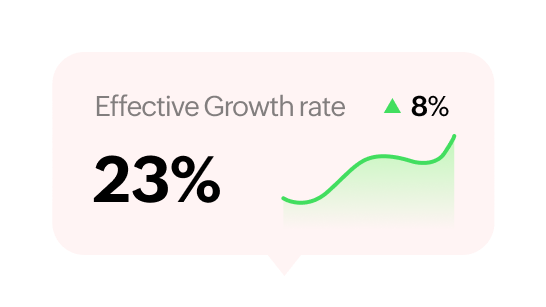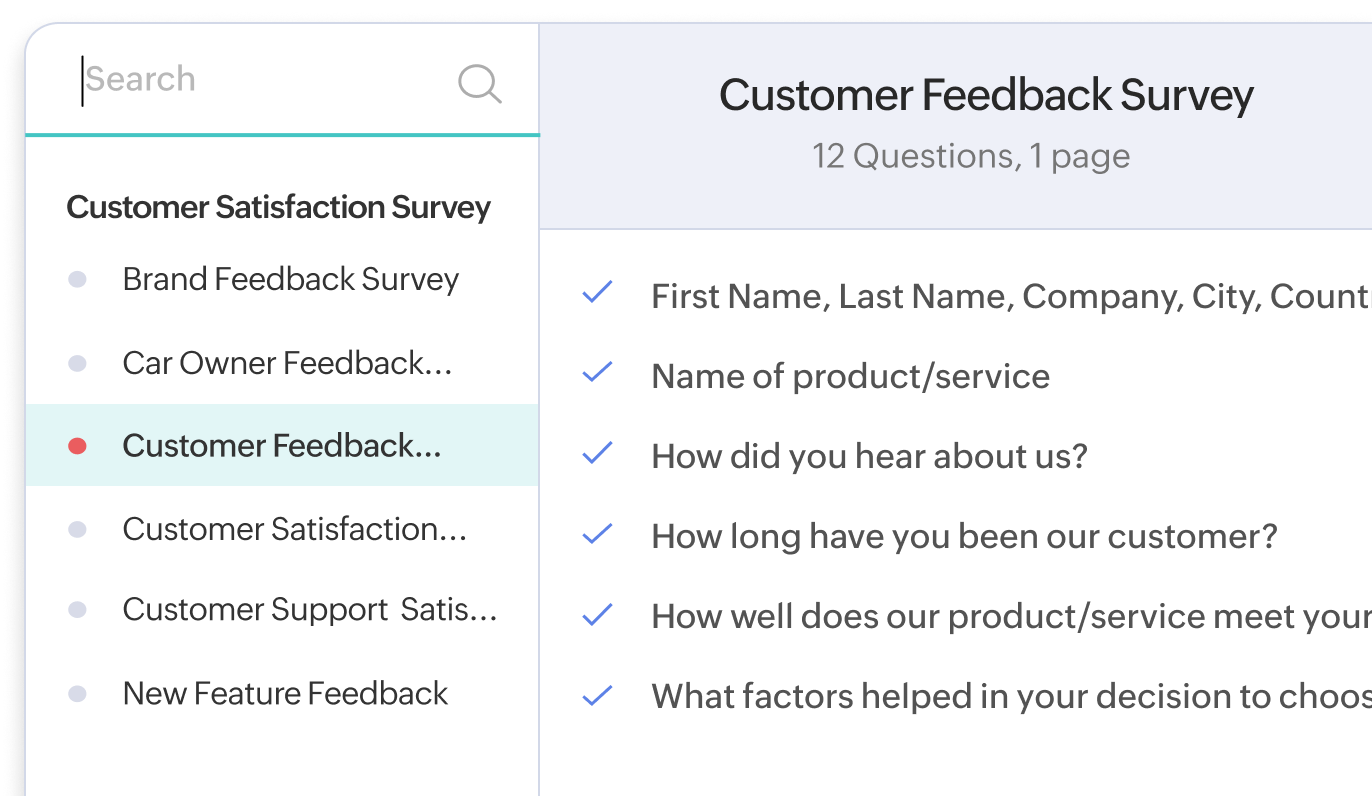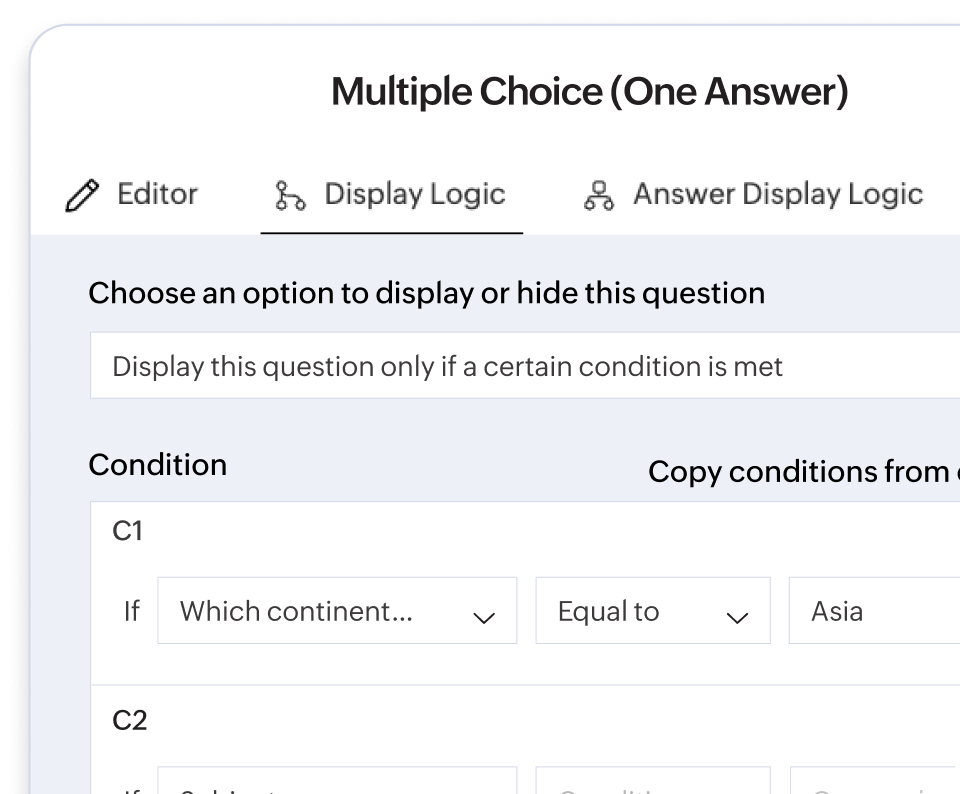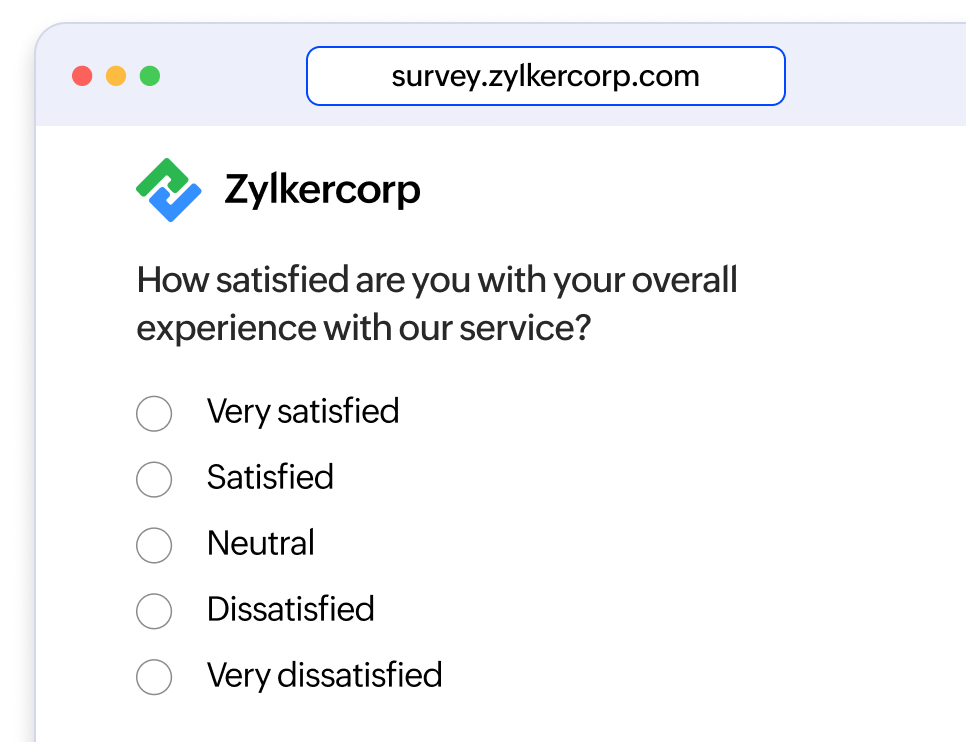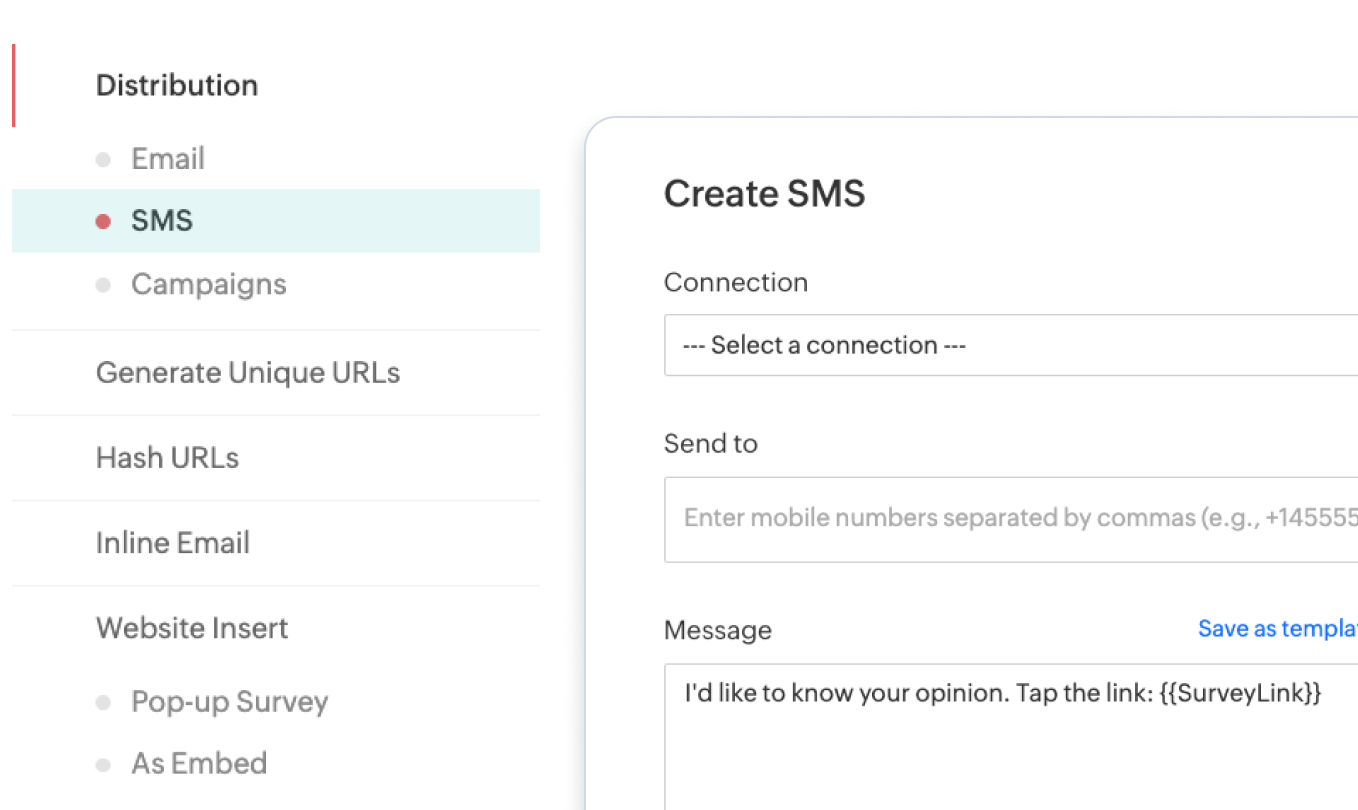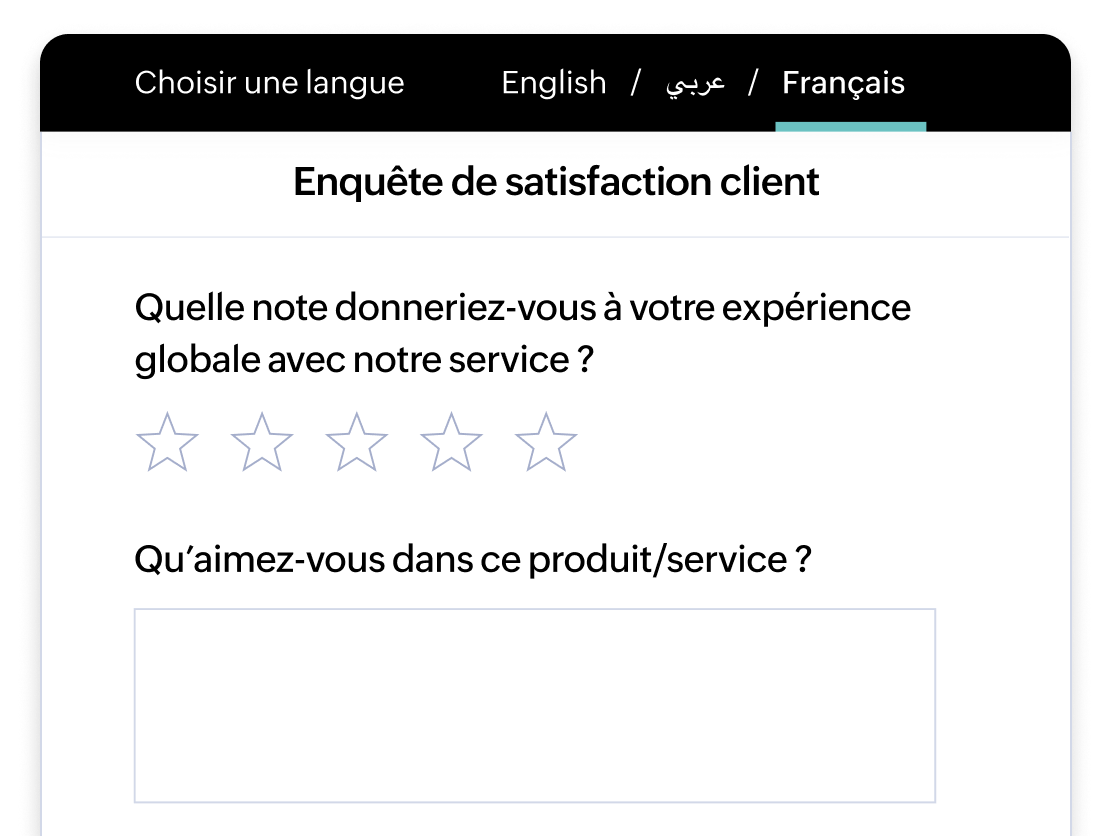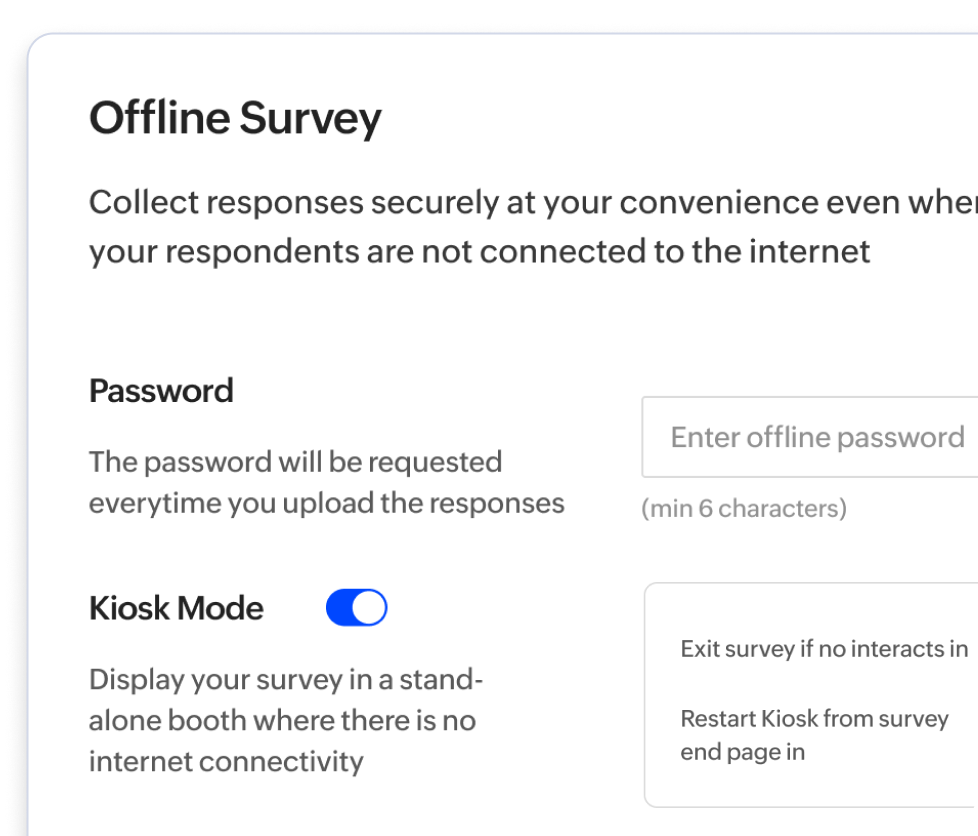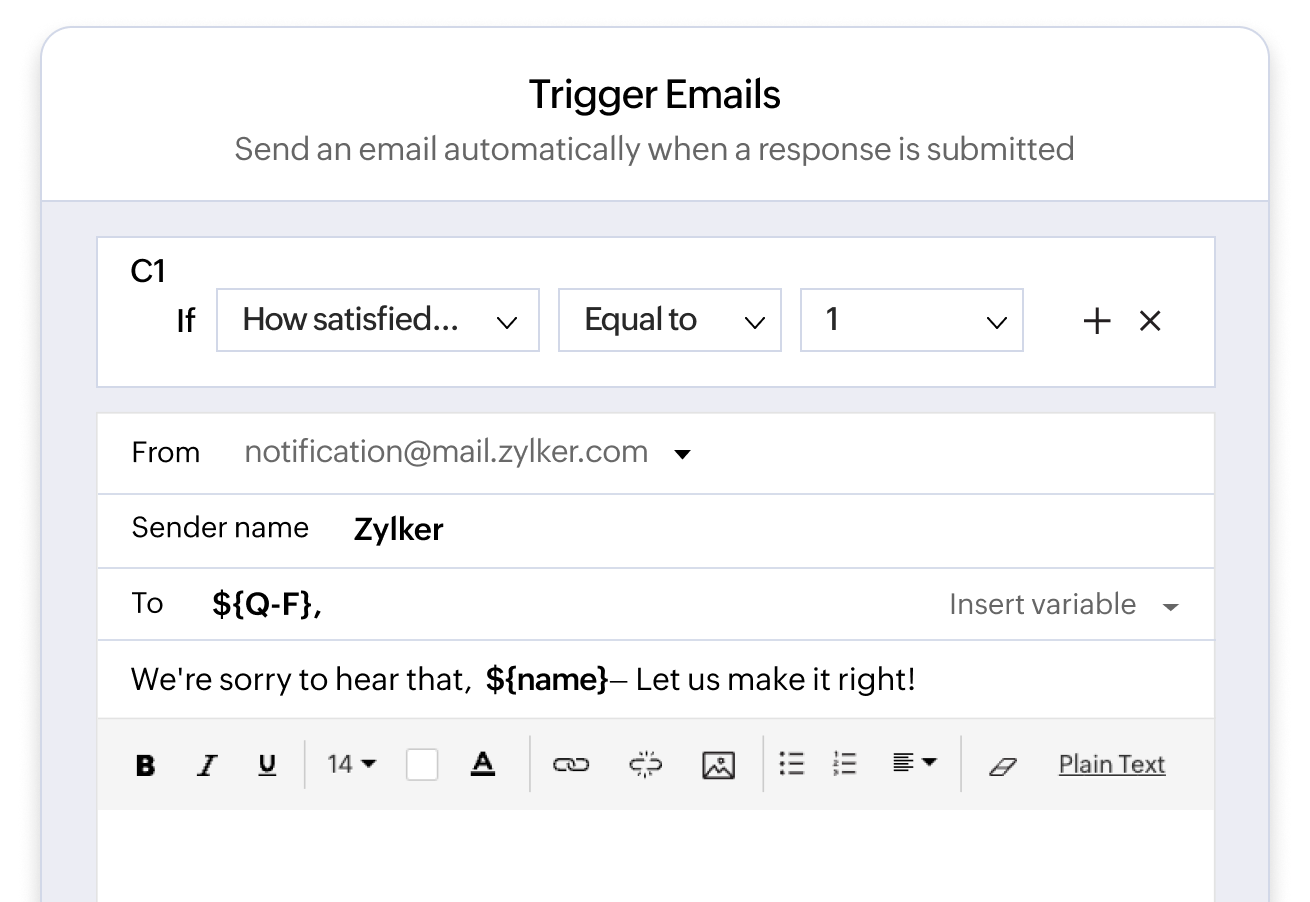Whether it's a frustrating checkout process or delayed support, customer experience surveys let you identify issues as they arise. Acting on this feedback in real time prevents small problems from turning into bigger ones.
Five reasons your business needs customer experience surveys
By acting on feedback, you show customers their opinions matter. This builds trust and loyalty. That is how they are more likely to stay with your brand and recommend it to others. Loyal customers aren’t just repeat buyers; they’re your strongest advocates.
Track how happy customers are with your products and services through metrics like CSAT or NPS. This data helps you continuously refine experiences, ensuring satisfaction increases with every interaction.
Surveys uncover what your customers truly want—whether it’s faster delivery, specific features, or more personalized experiences. These insights let you adapt quickly and deliver exactly what resonates with your audience.
With continuous feedback, you can stay agile and responsive in an ever-changing market. These insights will help you outsmart your competitors and stay ahead in the market.
Why Zoho Survey?
Secure and reliable
With multiple data centers and GDPR compliance, your data is always safe and handled responsibly.
Unlimited responses
Gather as much feedback as you need—no caps, no limits.
Affordable pricing
Packed with features at a price that fits any budget.
Check our pricing24/5 Dedicated support
Our friendly team is here to assist you every step of the way
Different types of CX surveys and when to use them
- Transactional surveys
- Relational surveys
Customer satisfaction (CSAT) surveys
Sometimes you just need to know if your customers are happy. CSAT surveys provide quick insights into customer satisfaction with a product, service, or interaction.
When to use :
After a purchase, delivery, or support interaction.
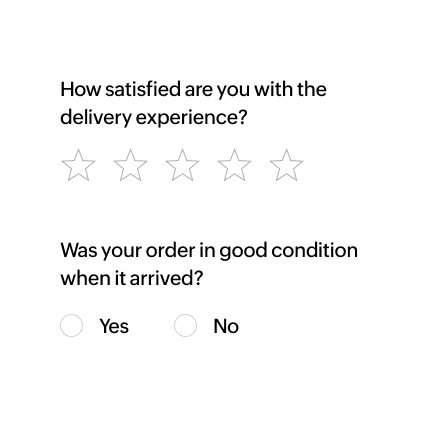
Customer effort score (CES) surveys
How easy is it for your customers to interact with you? CES surveys measure the effort required to complete tasks like placing an order. Use them to identify friction points and create smoother experiences.
When to use :
After completing tasks like a purchase or support query.
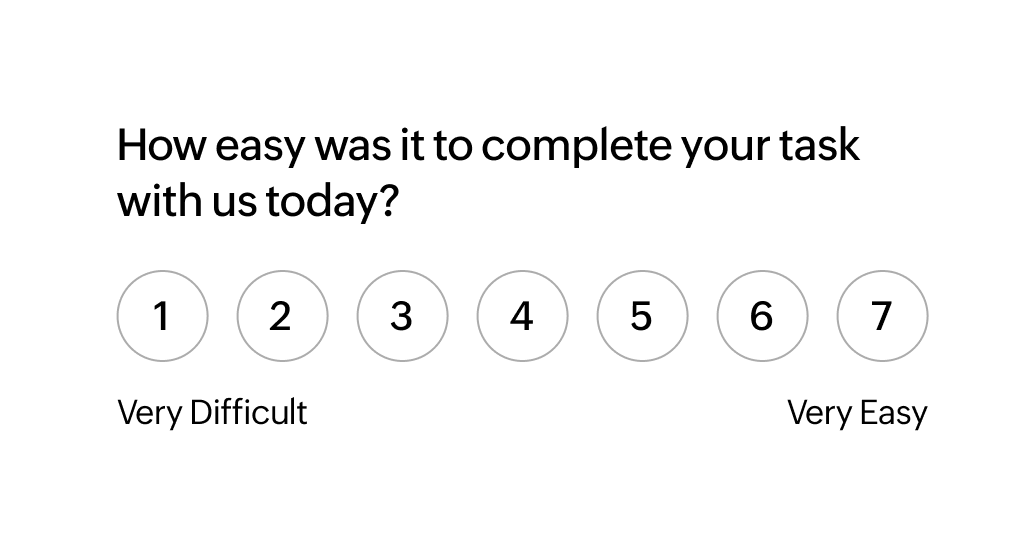
Website feedback surveys
Websites are often the first impression of your brand. Understand how visitors perceive your website’s usability, design, and content to enhance their experience.
When to use :
After completing key actions or exiting critical pages like pricing or product pages.
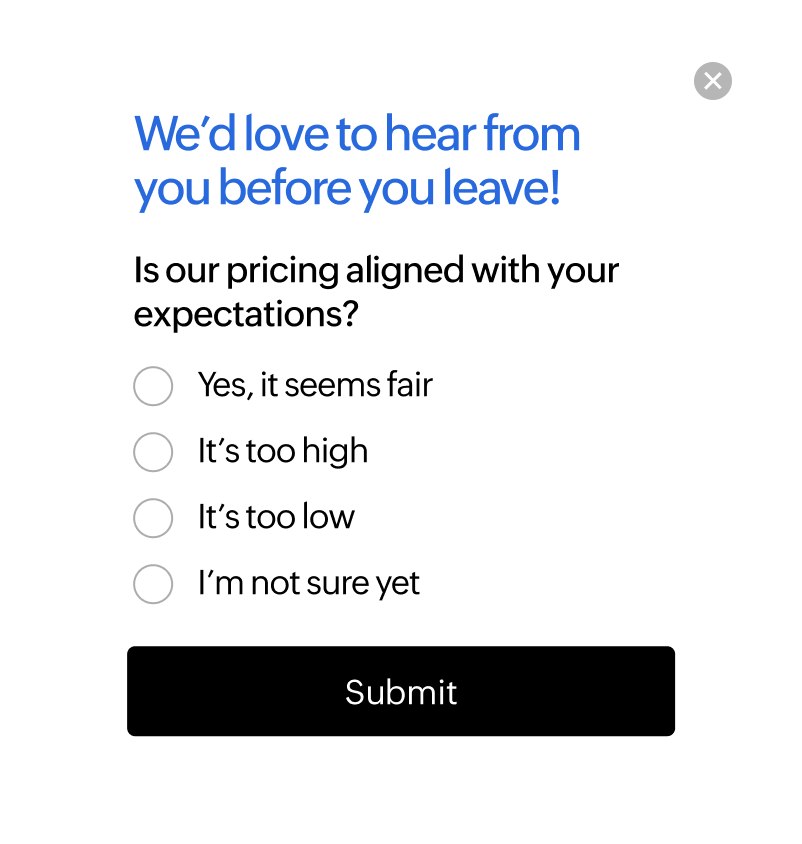
Follow-up surveys
Following up shows you care. These surveys gather feedback after milestones like product delivery or project completion, helping you track satisfaction and nurture lasting relationships.
When to use :
A few days or weeks after key customer milestones.
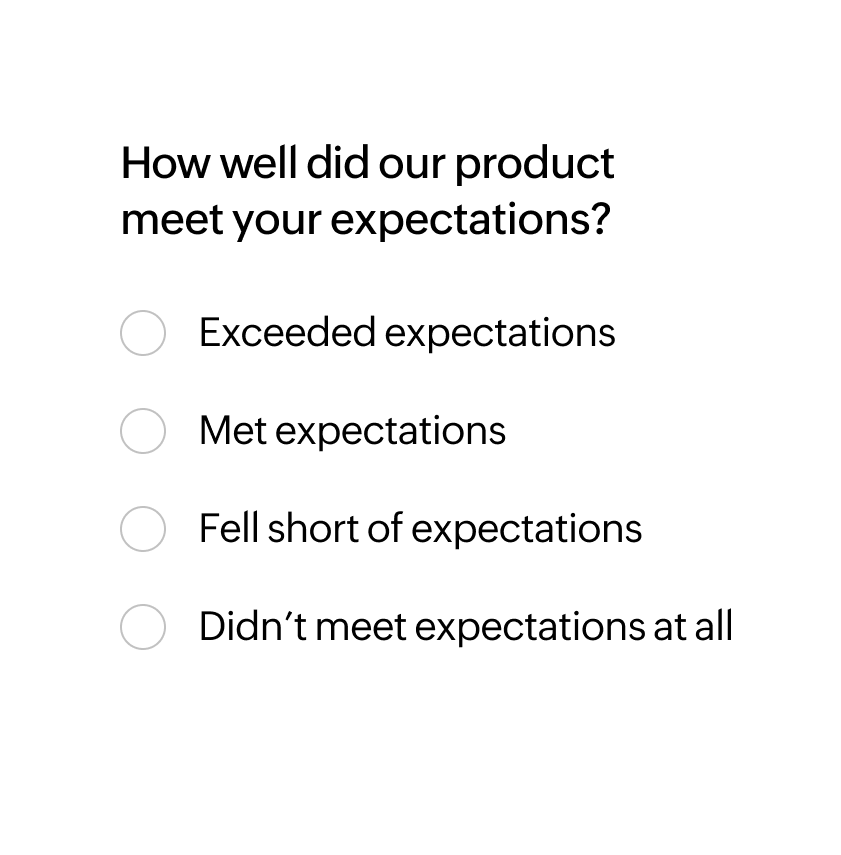
Churn analysis surveys
Every customer lost is a lesson. Churn surveys explore why customers leave. This helps you identify dissatisfaction and refine retention strategies.
When to use :
When a customer cancels, unsubscribes, or returns a product.
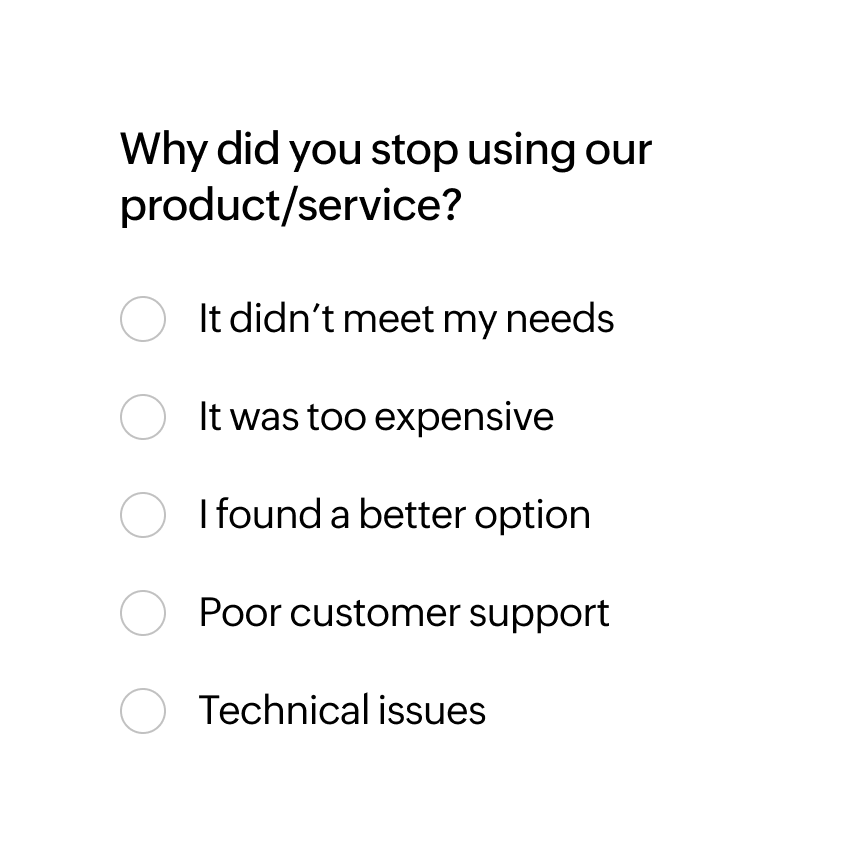
Net Promoter Score (NPS) surveys
Loyal customers are your biggest advocates, and NPS surveys help you identify them. By asking how likely they are to recommend your brand, you can gauge loyalty and what forms detractors.
When to use :
Periodically to assess brand loyalty and sentiment.
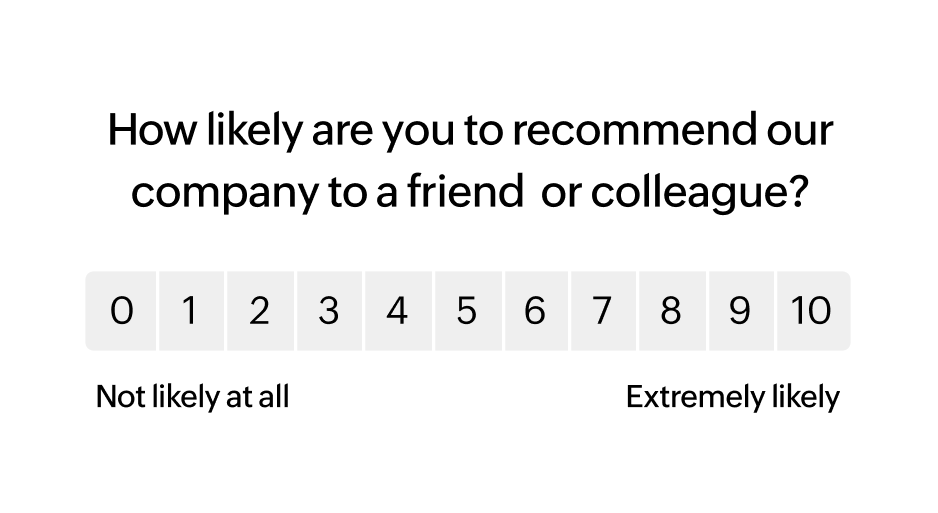
Customer Health Score (CHS)
Are your customer relationships thriving or at risk? CHS surveys combine metrics like usage, satisfaction, and support history to predict retention and identify customers who need extra attention.
When to use :
Regularly to track customer health and address at-risk accounts.
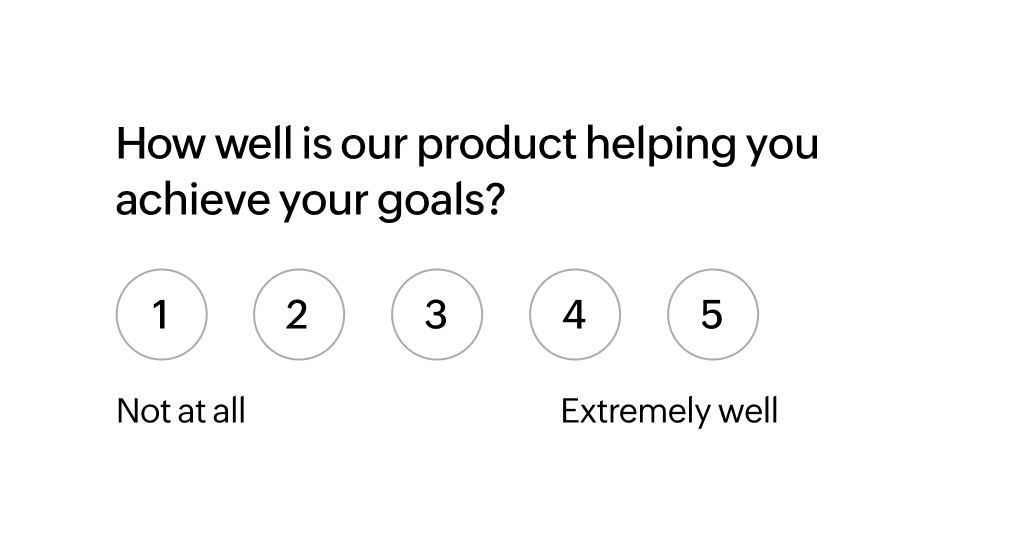
Voice of the customer (VoC) Surveys
Your customers have opinions and stories worth hearing. VoC surveys use open-ended questions to collect valuable feedback on their overall experience, uncovering information you might otherwise miss.
When to use :
When you want a broad view of customer opinions and emotions.

Customer journey experience surveys
Every step of your customer’s journey counts. These surveys capture customer sentiment at different touchpoints to reveal strengths and gaps.
When to use :
Regularly across the customer lifecycle.
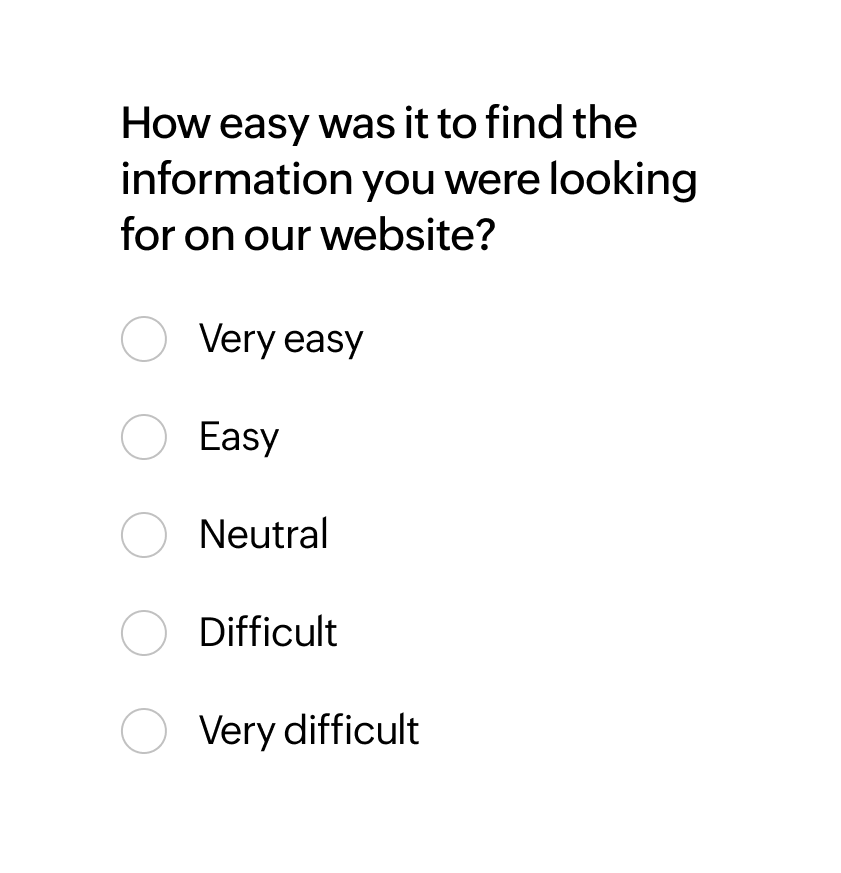
How does Zoho Survey help with customer experience?
Get started with ready-made templates designed for CX goals and 30+ question types to ask what truly matters. It’s the quickest way to create effective surveys that deliver meaningful insights.
Take respondents through personalized surveys with skip logic and conditional flows. By showing only relevant questions, you create an engaging experience that captures precise data.
Enhance credibility and trust with white-labeled surveys on your custom domain. Use themes, logos, and layouts to make every survey a seamless extension of your brand.
Distribute surveys via email, SMS, social media, or embed them on your website. Multi-channel options ensure you capture feedback from every touchpoint in your customer’s journey.
Create surveys in multiple languages to connect with your diverse audience. Multilingual surveys ensure inclusivity, higher response rates, and stronger customer engagement.
Take respondents through personalized surveys with skip logic and conditional flows. By showing only relevant questions, you create an engaging experience that captures precise data.
Streamline your processes by integrating with tools like Zoho CRM, Zoho campaigns, Zapier etc. Automate tasks, sync data, and enhance experiences with smooth, connected workflows.
Automate email triggers based on survey responses. This ensures you act quickly on feedback, demonstrating that customer opinions truly matter.
Frequently asked questions
Include a mix of question types like ratings, multiple-choice, and open-text. Focus on key areas such as satisfaction, ease of use, and likelihood to recommend (NPS). Tailor questions to address specific touchpoints in the customer journey
Keep surveys short, relevant, and engaging. Offer incentives, use personalized messaging, and distribute them through preferred channels like email, SMS, or app notifications to maximize participation.
Prioritize actionable insights. Address customer concerns promptly, share feedback with your team, and implement changes based on trends. Let customers know how their input made a difference to build trust.
Improved customer satisfaction, loyalty, and retention directly impact revenue. Acting on feedback helps reduce churn, increase referrals, and enhance brand reputation.









